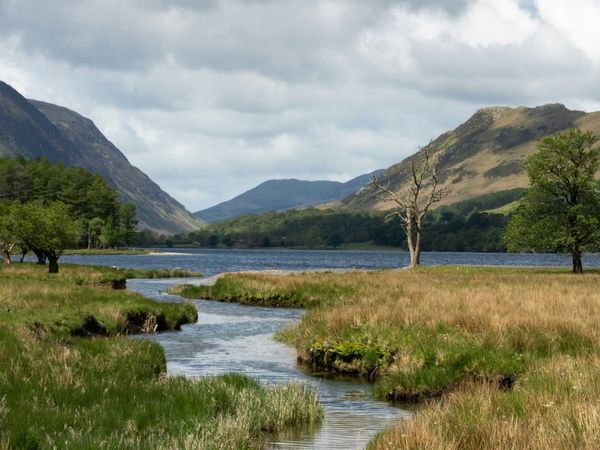
Miles upon miles of rolling hills creating a patchwork of vibrant green hues across the grassland, charming English towns built with honey-coloured stone and historic English landmarks make the Cotswolds an enchanting place for a UK staycation.
Covering five counties including Gloucestershire, Warwickshire and Wiltshire, the area has become known for its range of quintessentially English attractions, from Blenheim Palace and Warwick Castle to good old English countryside pubs and fairytale-like villages.
It would take dozens of trips to visit all the spectacular sites and towns such as Cheltenham or Witney, but one of the area’s undeniable selling points is its range of long country walks. Much of the region is rural, with over 3,000 miles of footpaths and bridleways to explore, meandering up high, into the valleys, through centuries-old woodlands and out into wildflower meadows.
To help you in the search for your perfect Cotswolds walk, we’ve compiled a list of some of the best routes; simply combine them with castle tours and strolls around sleepy villages for a picture-perfect countryside break.
1. The Cotswold Way
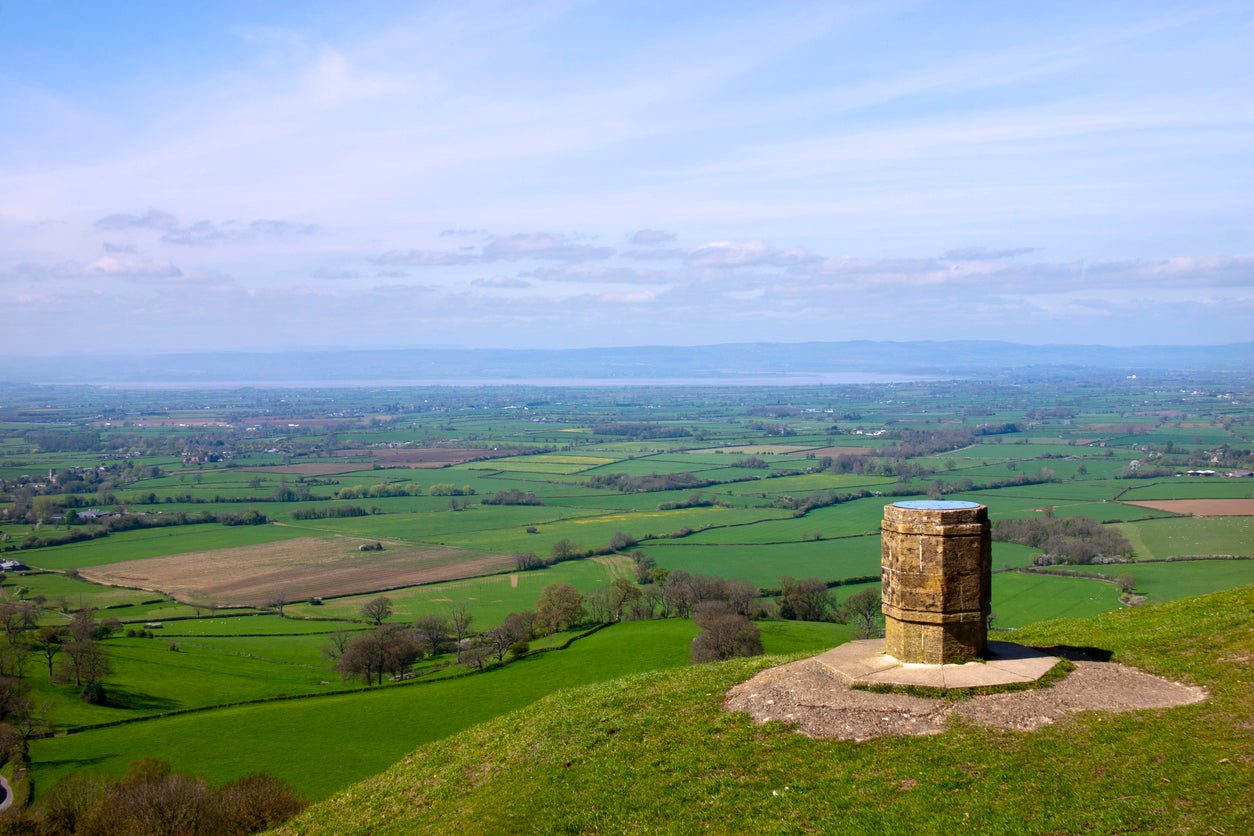
The region’s defining walk is a 102-mile-long route that begins in the picturesque town of Chipping Campden in Gloucestershire. Stretching all the way to Bath, this National Trail is broken into 15 different stages, ranging from 4.7 to 10.2 miles. From the start point, the route takes in towns and villages such as Broadway, Wood Stanley and Dursley, as well as natural landmarks such as Cleeve Hill, Coaley Peak and Crickley Hill.
Many of the most popular walks in the area follow at least part of the Cotswold Way, so for anyone who doesn’t fancy the entire 100-mile challenge, there are various great options for scenic walks (some of which are below). For a mix of quaint towns, small cities and pleasant views, we recommend the sections between Cleeve Hill and Dowdeswell and Cold Ashton to Bath.
For a stay the end of your walk, the Yard Hotel in Bath, less than half a mile from the Abbey and the Roman Baths, boasts its own courtyard and wine bar.
Read more: The best Cotswolds hotels for luxury spa breaks and countryside cuisine
2. Shakespeare’s Way
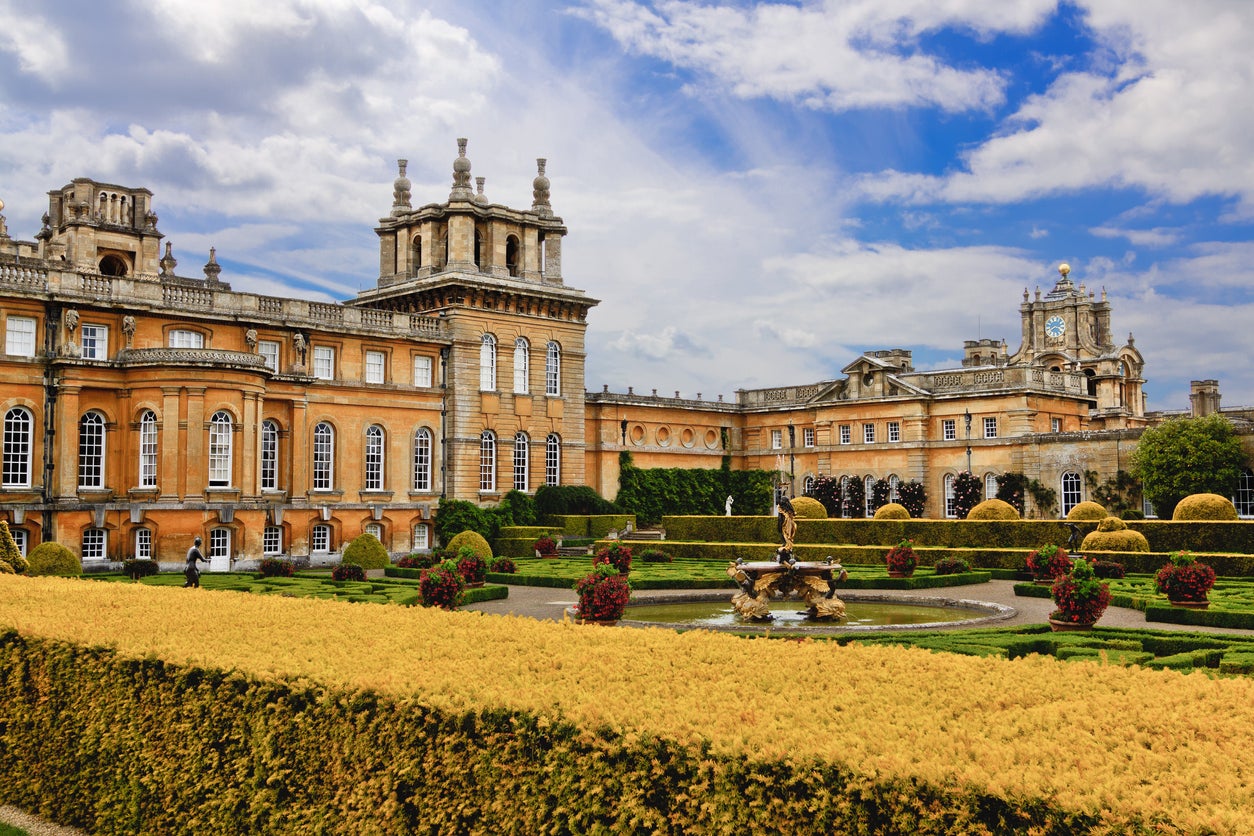
While the entire route takes you all the way to London, large sections of the beginning of Shakespeare’s Way are found in attractive areas of the Cotswold countryside. It’s intended to closely follow a route that the famous playwright may have taken on his travels to the capital, and so begins in his birthplace of Stratford-upon-Avon (which lies just outside the border for the Cotswolds Area of Outstanding Natural Beauty).
The Cotswolds part of the trail takes in one of the area’s most important sites, Blenheim Palace (now the seat of the Dukes of Marlborough). Start at Chipping Norton, where you can follow parts of the walk to Woodstock before detouring towards the palace and its garden (and then doubling back on yourself).
For a place to bunker down in Woodstock, head to Macdonald Bear Hotel, a four-star hotel set in a 13th-century coaching inn, offering deluxe rooms with traditional furniture and periodic interiors.
Read more: The best spa hotels in the Cotswolds for thermal waters and rejuvenating treatments
3. Coln St. Aldwyns to Bibury

This route highlights some of the best villages in the Cotswolds. It starts in Coln St Aldwyns, a small village in the Coln River valley. The route itself is just over six miles long, taking in sections of peaceful countryside on the way to Bibury, a village in the central part of the region that’s 15 minutes from Cirencester.
Bibury is home to the famous Arlington Row, one of the highlights of this short route that showcases 14th-century houses that were originally built as wool stores (and that have since been used as filming locations in Hollywood productions).
Once you arrive, book into the ivy-clad Swan Hotel is set on the banks of the river, just one minute from Arlington Row and the heart of the village. It features riverside gardens, a courtyard and its own afternoon tea offering.
Read more: The best boutique hotels in the Cotswolds, from dog-friendly stays to Michelin-star menus
4. Chipping Campden to Broadway Tower
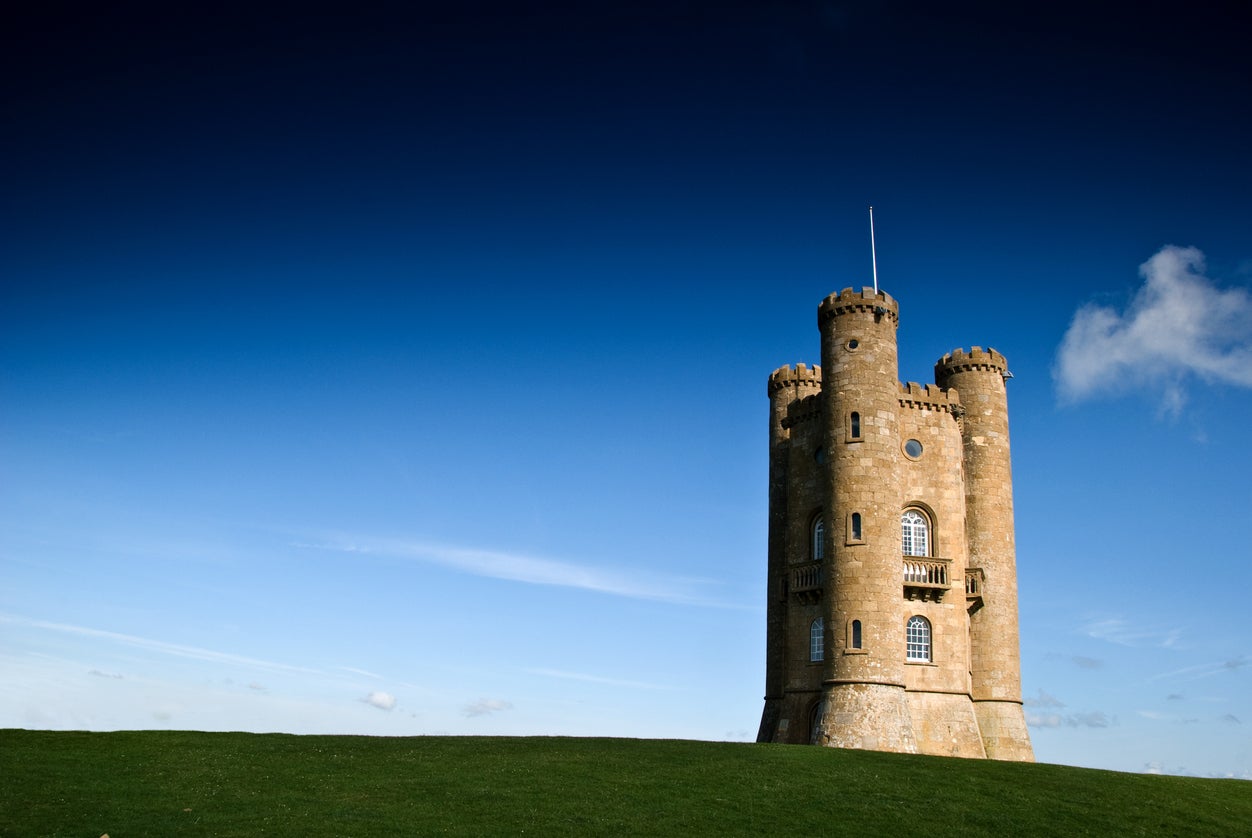
Part of the Cotswold Way, this is another relatively short walk at six miles. The route takes in two of the region’s most popular destinations, starting and finishing in Chipping Campden, a historic market town with a high street that dates from between the 14th and 17th centuries. From there, you cross the meadows and woodlands of the Gloucestershire-Worcestershire border before arriving at Broadway Tower, an 18th-century structure built for the Earl of Coventry.
The tower itself has sweeping views over the English countryside, and it’s said that on a clear day you can see up to 16 counties from the top of it. After taking in the views, head to the town of Broadway, the ‘Jewel of the Cotswolds’ where honey-hued cottages meet period houses and century-old inns.
After your roundabout walk, The Cotswold House Hotel is a refined, stylish place to stay in Chipping Campden. It features its own spa and pool, fine dining restaurant and bistro.
Read more: The best hotels in the Cotswolds for budget-friendly breaks and affordable rooms
5. Winchcombe to Cleeve Hill
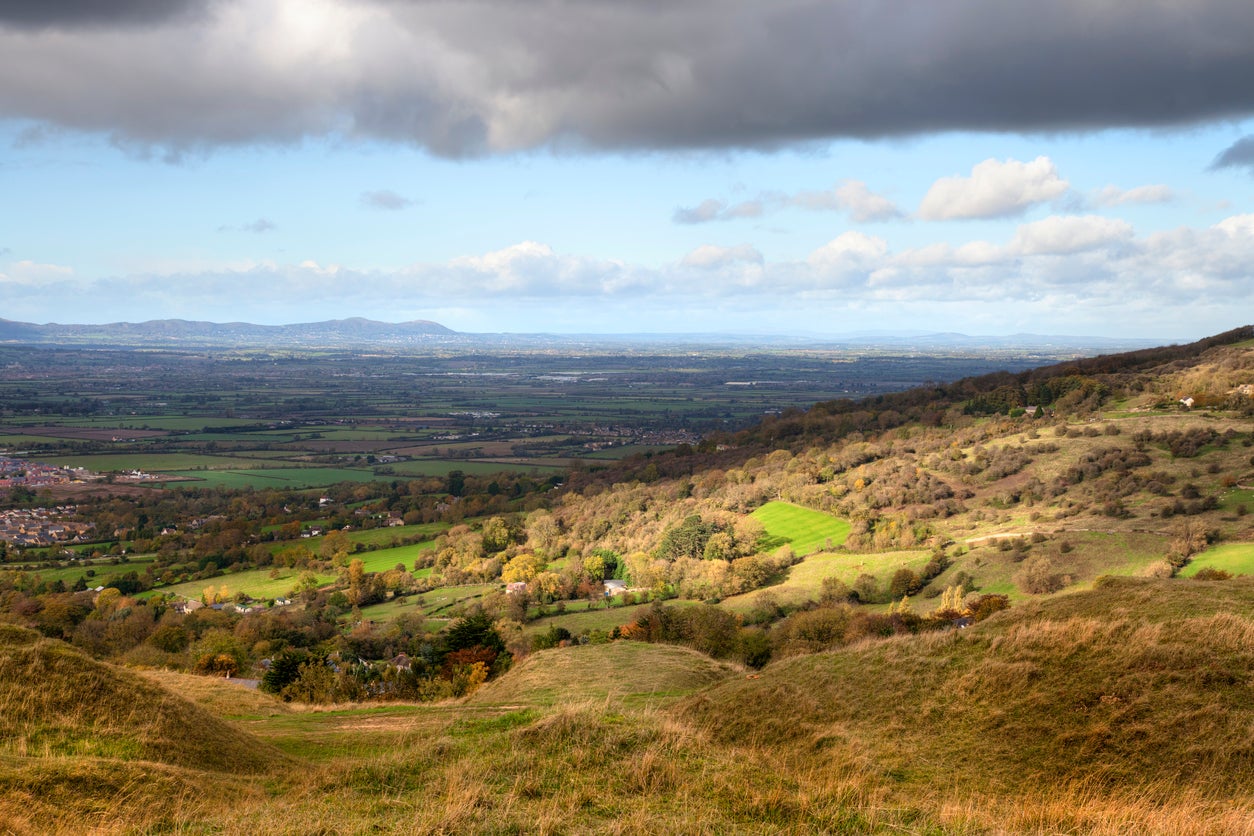
Covering the Cotswolds’ most ancient landmark, grandest castle and highest point, this route is a top choice for those who want to say they’ve experienced the ‘authentic’ Cotswolds. The walk starts in Winchcombe – a slightly larger market town with all the expected Cotswolds character – with the first stop at Sudeley Castle, which has a history spanning over a thousand years.
Next, you’ll find Belas Knap, a “particularly fine example of a Neolithic long barrow” (ancient monuments constructed from earth and stone that were sometimes used as burial sites). The last leg will take you to Cleeve Hill, the highest point in the Cotswolds at 330m above sea level.
In the neighbouring village of Cleve Hill in Winchcombe is The Lion Inn, housed in a 15th-century former coaching inn and close to the town centre with its own restaurant, bar and al fresco dining area.
Read more: The Cotswolds weekend getaway where you can play your own game of the Traitors
6. Castle Combe

One of the Cotswolds’ many chocolate-box villages, Castle Combe is one place where the passing of time has not changed its appearance. As testament to that, it is claimed that no new houses have been built in the village since the 1600s, with golden cottages, high trees and stone walls dominating the landscape.
So where better to walk than this stereotypical sleepy English village? This four-and-a-half mile route takes you through the town itself and through areas of woodland before reaching Danks Down, a biological Site of Special Scientific Interest. Just remember to loop back to the village for more scenic bliss.
For a stay in Castle Combe, The Castle Inn dates back to the 12th century and has a stylish mixed facade of stonewall and painted brick. Each room is individually decorated, while the restaurant, complete with a terrace and garden area, offers British cuisine in an informal setting.
Read more: Where to wine, dine and hike along Britain’s original national trail
7. The Windrush Way
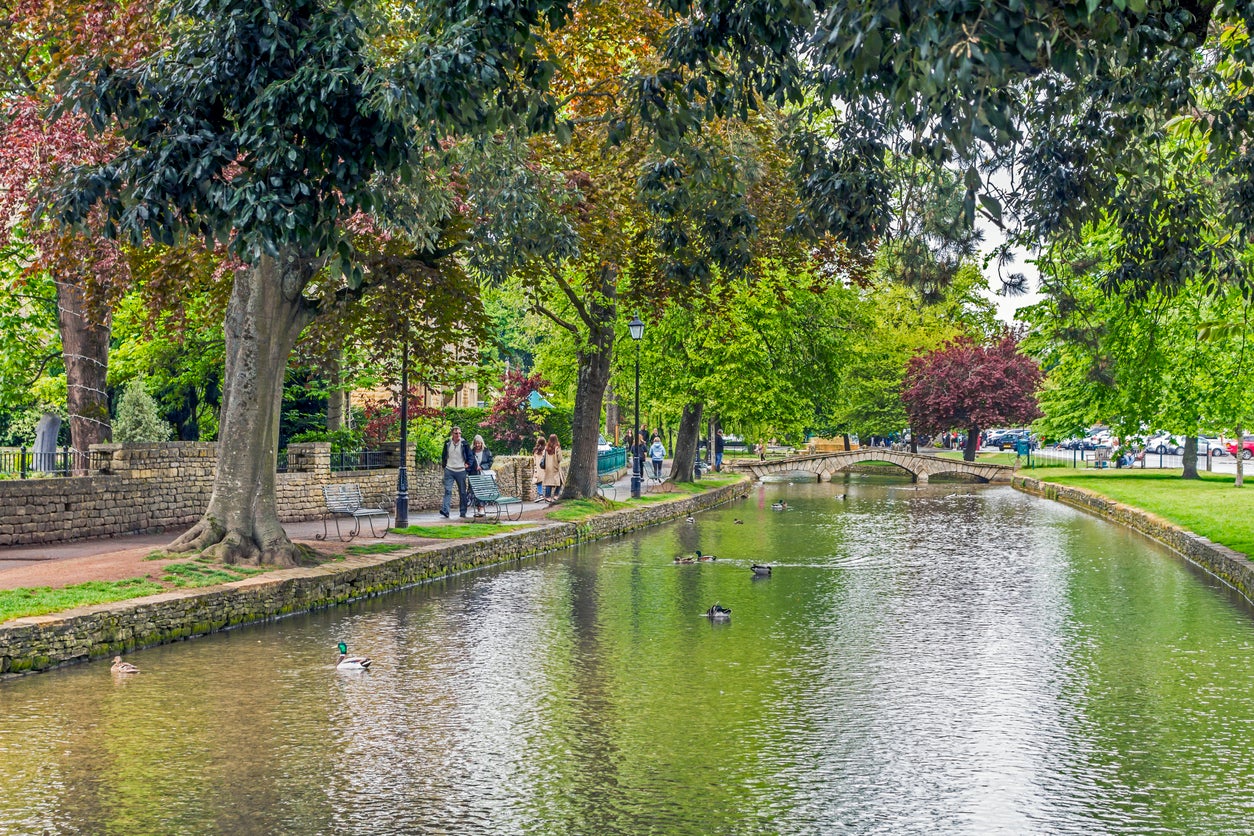
The Windrush Way connects the Cotswold Way with the Oxfordshire Way for a longer but still manageable route. This 13.5 mile walk is one of the most beautiful in the region, combining natural views with landmarks and medieval villages. Beginning (and ending) in Bourton-on-the-Water, it runs along parts of the Windrush River and passes sites such as Winchcombe, Sudeley Castle, Westfield House and Gazeley Wood.
From tranquil riverside walking to spotting limestone cottages and taking in the views of the valleys and farmland, this is a strong choice of walk for anyone looking to cover a longer distance while still keeping a base in the same one or two towns.
To stay near your start and end point, Dial House is a particularly charming hotel set in a stone-walled building in the heart of Bourton-on-the-Water, offering a lovely festooned garden area.
Read more: Europe’s best walking trails to hike






